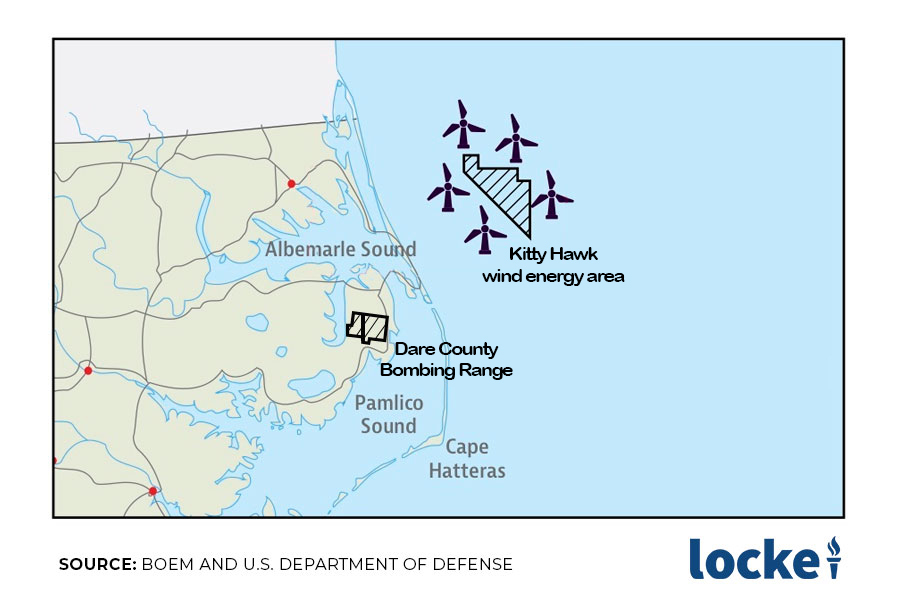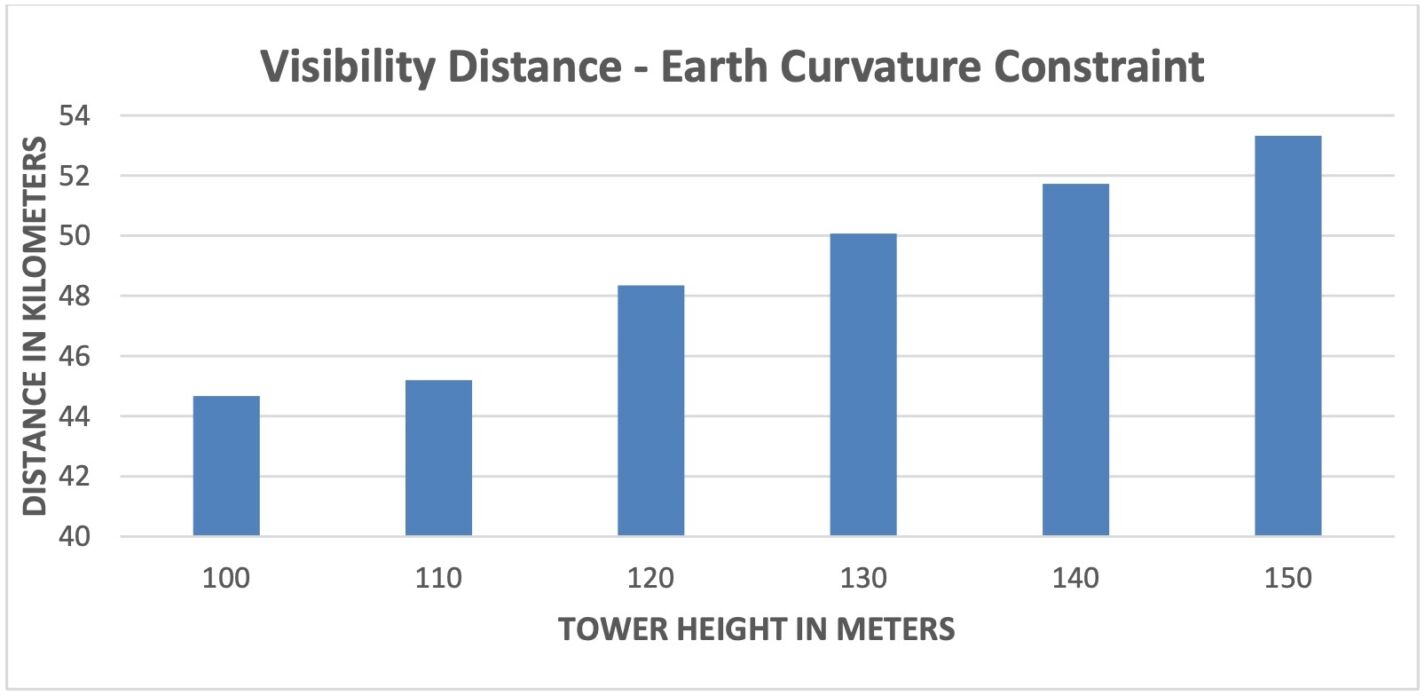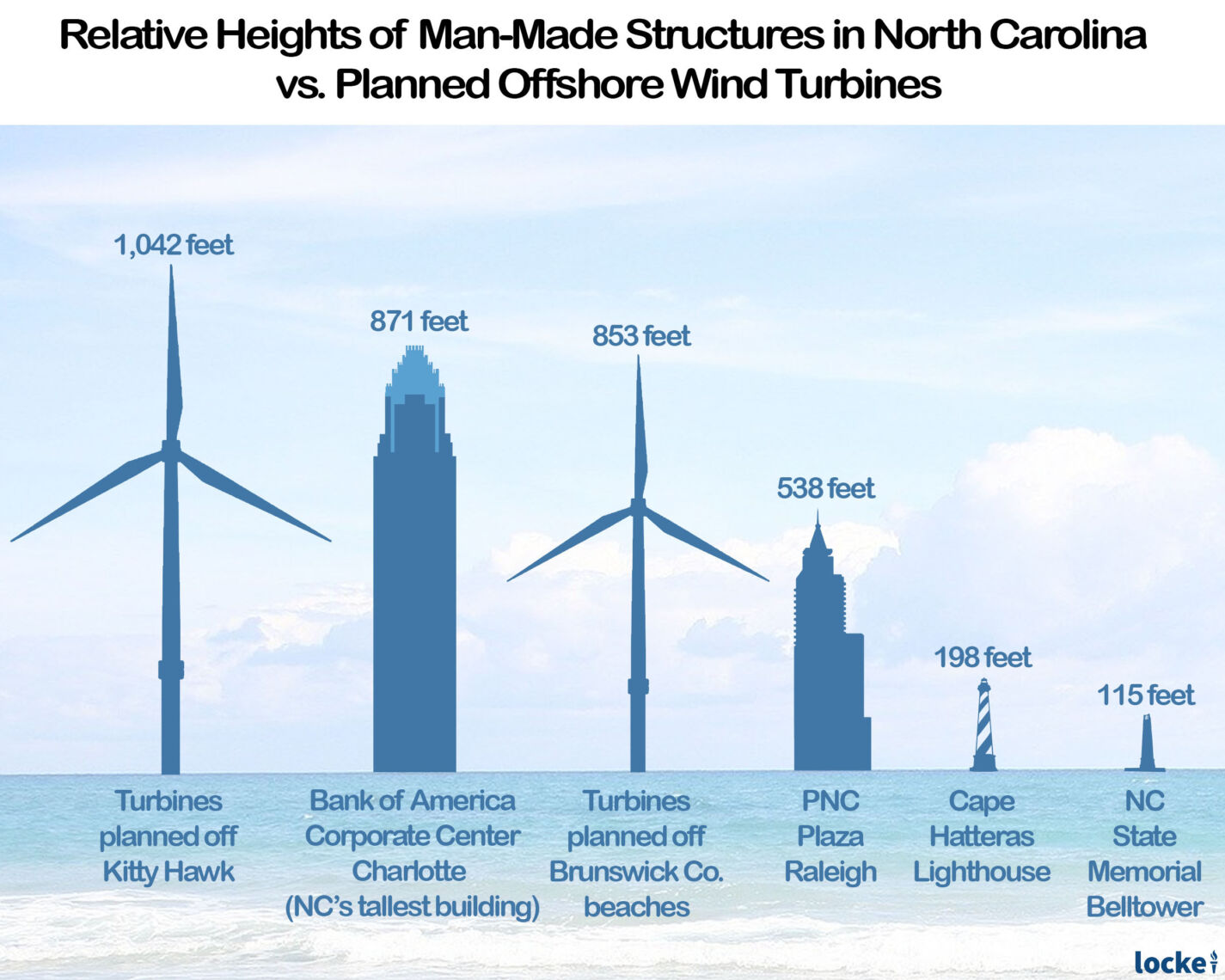The Outer Banks Voice reported recently that construction will begin next year on the Kitty Hawk wind energy area. Outer Banks residents are properly concerned about spoiled views and other economic impacts from the project. As shown below, from a beach house on stilts, 69 percent of the turbines will be visible, and they will sport flashing lights that will be arresting features at night.
Incidentally, the Pentagon has been trying to warn the Biden administration of the national security threat from this project in particular and several other sprawling offshore wind projects filled with large arrays of giant turbines. They will interfere with and compromise military training and operations.
The Kitty Hawk project is one in particular that will make the military “unable to continue its mission as currently conducted in the space.” In particular, it would especially disrupt fighter jet training using the Dare County Bombing Range, a training range used by the 4th Fighter Wing at Seymour Johnson Air Force Base, N.C., as well as by the Navy and Marine Corps.
Proximity of the Kitty Hawk Wind Energy Area to the Dare County Bombing Range Used by the 4th Fighter Wing at Seymour Johnson Air Force Base and the Navy and Marine Corps

Casual readers who find it hard to believe that this offshore wind project could interrupt military training perhaps haven’t considered the enormity of the project in an area used for low-flying training runs (especially as it will be amid other such projects). Nevertheless, the Kitty Hawk wind project would:
- Span an area of approximately 193 square miles — over twice the area of the city of Norfolk, Virginia
- Contain 69 wind turbines reaching 1,042 feet from base to tip — over 20 percent taller than the state’s tallest building, the Bank of America Corporate Center in Charlotte
- Be an enormous “city” of massive, whirling skyscrapers known to cause significant radar disruption
- Be placed only 24 nautical miles off the Outer Banks
“Our horizon will be nothing but turbines,” and at night, “a flashing rope light strung on the horizon.”
Residents rightly concerned about visibility
While the military is worried about compromised training, operations, and national security, Outer Banks residents are worried about spoiled views and other problems. As they have done with Brunswick County residents with similar, unfortunately very justified concerns, offshore wind interests held an information session to tamp down those concerns.
The Kitty Hawk offshore wind project’s distance from the Outer Banks of 24 nautical miles happens to be the same distance as the official range of the Cape Hatteras Lighthouse, which stands 210 feet above sea level (about one-fifth the height of the Kitty Hawk turbines).
The Outer Banks Voice reported that on April 13, Avangrid held a public information meeting in Corolla offering projections of how the turbines might appear in “‘a worst-case scenario,’ which occurs when the turbines would be most visible, typically mid to late afternoon.” The Voice noted that the scenario did not involve nighttime visibility, when the turbines and blade tips would be festooned with lights:
The issue of what would be seen from the shore is a central concern for a number of area residents. Corolla resident Tony Cerri, who attended the April 13 meeting, told the Voice that he believed that at the maximum allowable 1,041 limit, the turbines “will have a dramatic impact on the view from Corolla beach. Our horizon will be nothing but turbines.” Cerri said that view is based on mathematical calculations based on the curvature of the earth.
He also raised concerns about nighttime visibility of the turbines, describing what would be seen from Corolla as “a flashing rope light strung on the horizon.”
When asked if Avangrid had developed nighttime visualizations, Megan Higgins, Senior Director, New Project Development for Avangrid responded that a study had been done of the southern part of the lease area but did not mention the northern section that will be developed first.
In 2016, the Bureau of Ocean Energy Management under the Obama administration showed that turbines as small as 328 to 492 feet tall — i.e., a fraction of the 1,042-foot-tall turbines planned off the Outer Banks — could be seen unaided on a clear day from as far away as 23.5 to 27.8 nautical miles.
Visibility Distances of Offshore Wind Turbines, By Height (Includes Refraction)
* Note: Turbine heights in this graph range from 328 to 492 feet, and distances range from 23.5 to 27.8 nautical miles

Source: BOEM
Wind interests like to focus on visibility from the shoreline during the day. The shoreline, however, is the lowest vantage point with comparably the least visibility. During the day doesn’t account for the reach of flashing turbine lights, which are more visually arresting and disruptive at night.
Using the Earth’s Curvature Calculator, at 24 nautical miles, here is how much of those enormous towers (1,042 feet tall) would be visible in clear conditions from to a North Carolinian of average height standing on the shore vs. viewing the ocean from a Kitty Hawk beach house on stilts:
- From the shore: the bottom 411 feet would be obscured and the upper 630 feet (61 percent) would be visible
- From a beach house on stilts: only the bottom 318 feet would be obscured and the upper 724 feet (69 percent) would be visible
Of course, more of the turbines would be visible from greater heights, such as from upper stories, hotels, and condominiums. It bears repeating that even as those structures would appear less prominent at those distances, all the lights on those turbines — flashing 30 times per minute — would be impossible to miss.
For more discussion of light visibility at night, see this recent research brief and follow-up.



